JB NO ICE - Time Off


01. Time Off (55:00)
This one track album contains a field recording collage that was made for meditation proposal and syncretic listening. We can listen places as Sabóia (Ambisonics recording), Serra da Gardunha (X-Y stereo recording), Serra da Estrela Natural Park (Mono + X-Y stereo recording) and my hometown Barreiro, at a boat dock placed in the River Tagus (Ambisonics Recording). During the piece it is possible to hear the sounds of nature and animals such as water sounds/streams, wind and swinging tree branches, a crow, baby birds and some sparrows - the recordings were in a fixed position, without microphone movements and human made sounds.
Credits:
Style: Field Recordings//Soundscape
Original photos: JB NO ICE
Artwork: JB NO ICE/GFR
(cc) 2018
Robert Kroos - Adhãn
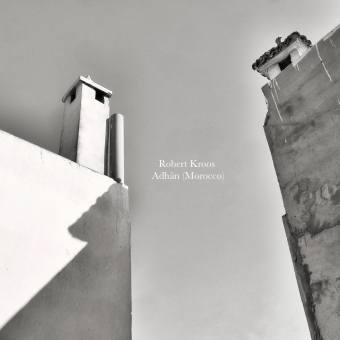
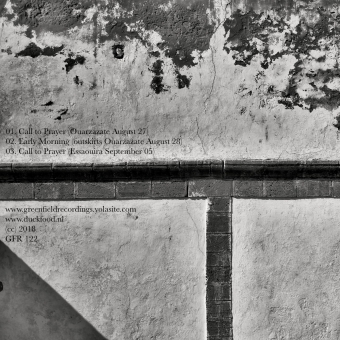
01. Call to Prayer (Ouarzazate, August 27 ) (04:11)
02. Early Morning (outskirts Ouarzazate, August 28) (33:55)
03.Call to Prayer (Essaouira, September 05) (43:22)
(semi) binaural recordings made in 2018, Morocco, by Robert Kroos
Credits:
Style: Field Recordings/Binaural Recordings/Soundscape
Original photos: Robert Kroos
Artwork: GFR
(cc) 2018
B. D. Symonds - OUSE

 340.jpg?timestamp=1538839962334)
01. OUSE (I) (39:39)
02. OUSE (II) (43:12)
03. OUSE (III) (46:25)
Over the course of seven days in the spring of 2017, I travelled alone and on foot along the Sussex Ouse Valley Way, a 42 mile journey that broadly follows the River Ouse from its source in Lower Beeding near Horsham, out to the English Channel at Seaford Bay. As I went, I let my ears guide me, allowing them to be the sole indicator of where and when I should press record. At the journey’s end, I had gathered around twenty hours of audio material, many pages of notes relating to the site and conditions of each recording, and quite a number of photographs.
With this project I felt it was important to achieve a balance between the artistic and the scientific. As an artist, the inevitable individuality that one lends to his or her work is unavoidable, yet I still felt that with a work such as this, I wanted to remain as true as possible to the actual state of things, and to document the environment as it was at the time I was there. Consequently, it has been of great consideration during the composition of this work, as to how I might most accurately recreate the sensation of experiencing the acoustic environment as I encountered it first hand; to try and make the listener hear what I was hearing when I was there in person. As such, I deliberately leave the recordings as unprocessed as possible, only sometimes elaborating points of interest, not by altering their innate structure, but simply by augmenting or diminishing certain frequency bands, thereby highlighting specific sound sources. So whilst this piece is documentative in many respects, certain compositional and aesthetic choices perhaps render it more of an artistic impression of my own personal journey along the river, a sort of travelogue or aural diary of my excursion, as opposed to a scientific study per se.
B.D.Symonds
Credits:
Style: Field Recordings
Original photos: B. D. Symonds
Artwork: GFR
(cc) 2018
James Osland - Scenes From South East Asia
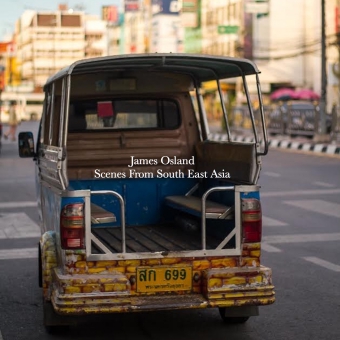

Scene I (05:44)
Scene II (02:22)
Scene III (04:59)
Scene IV (02:04)
Scene V (04:16)
Scene VI (01:40)
Scene VII (02:10)
Scene VIII (03:00)
Scene IX (05:26)
Scene X (04:04)
Scene XI (03:00)
Scene XII (06:08)
Scene XIII (06:16)
Scene XIV (03:56)
Credits:
Style: Field Recordings/Soundscape/Sound Composition
Original photos: James Osland
Artwork: GFR
(cc) 2018
murmer - raadio mälu

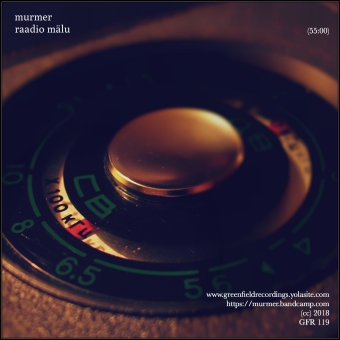
01. raadio mälu (55:00)
raadio mälu
a few months ago i found a small portable radio, dating probably from the 1980′s and made during soviet times, is a secondhand shop in the small village of mooste in southeast estonia. i have a thing for old radios, so i bought it, and it got me to thinking about the place of radio, not in this present world of internet streaming, podcasting and so forth, but in our past, and in our memories. i know i have distinct memories of radio, radio stations, djs, events, situations, and even places that i relate to radio from my own past, growing up in boston, during my student days in western massachusetts, all the way through my years at the resonance fm studios in london, and my attempts now to listen to estonian radio to improve my language skills. i wondered if this particular radio, alien to me but possibly familiar to estonians, might trigger memories for those around me, and i decided to find out.
i composed this piece from four elements: memories, stories and observations from a handful of estonians, related upon being presented with this particular radio for the first time; sonic material produced by the radio itself, both when tuned to and tuned between stations; field recordings from the surrounding landscape, vibrations in the immediate airwaves that have carried these radio signals; and archive material from estonian radio’s past, both in and before the country’s soviet era.
the estonians interviewed were given the choice of speaking in their native language or in english; two chose estonian, and two english. i have left the estonian language untranslated in the audio itself – much of what is being communicated can be heard in the tones of their voices, and through shared vocabulary. that said, i am providing a written translation for the estonian language sections below.
::: Alfred ::: 09:22-15:29 :::
It is, yes, made in USSR. It’s from Russian times. But with this one you couldn’t listen to Voice of America. This gets mediumwave and longwave. For Voice of America we used shortwave, 25, 31, and 49 meter bands. But this is… yes, with this one it should be possible… wait, let me check. It’s stuck in the bag. “Selga”; you see? It’s just as I thought, Selga. Produced in Latvia. Latvia made things like this. But let’s see which wavelengths it has – should be mediumwave and longwave. I had one just like this; I used to listen to German music with it. They played very good German music, on mediumwave. And it works? Yes, it’s got mediumwave and longwave. I used to listen to broadcasts in English on shortwave. We also had one of these Riga radios at home. They made a lot of these in Riga. All kinds of different machines. And then we also had a Radiotehnika, I used that one a lot too. I couldn’t speak any English yet, but i just listened to how good it sounded. It has such a nice timbre. Mother also used to listen to English radio – or which language did you listen to? Did you listen to Estonian? Mother doesn’t remember anymore which language she listened to. But yes, there was really good music. So this is from the Radiotehnika factory – RRR: Rigas Radiotehnika Rubnika. RRR, the factory’s mark. “Rigas Radiotehnika Rubnika” in Latvian. Selga 405. 29 rubles. Radio receiver. Look how well it’s preserved. Still working. It’s old already, probably 30, 35 years at least. Quality mark; this is a quality mark. SSSR. Here you choose longwave or mediumwave. It works well. ah, German. German? ah, one of them is speaking German, the other English. It works very well. Italiano – no, maybe not. No, I don’t know. Still English probably. Italian? He’s probably talking about the pope, who’s giving up his position. Is he giving up his position? It’s very sensitive, receiving very well. Don’t know what language that is. And what langauge is that? Ha, Big Brother language. Mine was light colored and had a colored bag as well. And a strap, like this one. This is of course newer than mine was. But that one I think broke. I don’t remember what was wrong with it.
::: Mari ::: 51:18-55:09 :::
It’s a radio, made in the Soviet Union. It has a black leather cover, a bag that has a strap that can be adjusted to different lengths, so that you can, for example, put it over your shoulder on the street and take it with you. Very comfortable. The bag has a nice soft texture on the inside. It has two snaps that you can close it with. The radio itself is rectangular, with two buttons: one for the volume, the other maybe for the frequency. The bag has one round hole, through which you can see the frequency indicator. And then there are many small round holes, to let the sound through. On the back there are some more holes. I don’t know what these can be for. Maybe for the radio to get ventilation. And then there is one hole through which headphones can be attached. And there is one more button with which, probably, different wavelengths – longwave, shortwave – can be selected; you can choose. Many words have been embossed on the bag, for example “made in USSR”. The radio is totally rectangular; the button is round and the speaker part is rectangular with small holes. The brand is Selga. The words on the indicator are green, and the pointer is red, and a bit transparent. On the indicator there are numbers: 1.5; 2; 3; 4; 5.6; 6.5; 8; 10 and 15. On the back is written Radio Prijemnik. Selga-405, type APP 4. Cost 29 rubles.
Patrick Mcginley
Credits:
Style: Field Recordings/Soundscape/Sound Composition
Original photos: murmer
Artwork: GFR
(cc) 2018
FFE - Road Tapes, Vol. II (GFR, 118)
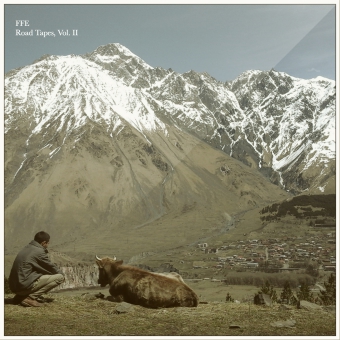
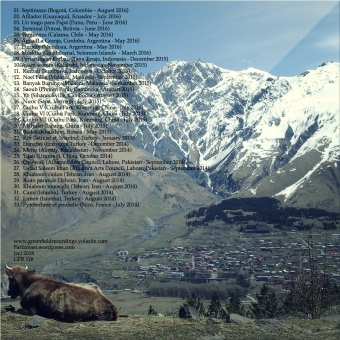
01. Septimazo (Bogotá, Colombia – August 2016)
02. Afilador (Guayaquil, Ecuador – July 2016)
03. Un trago para Papá (Puno, Peru – June 2016)
04. Terminal (Potosi, Bolivia – June 2016)
05. Vergüenza (Calama, Chile – May 2016)
06. Agua (La Granja, Cordoba, Argentina - May 2016)
07. Eternity (Mendoza, Argentina - May 2016)
08. Moskito (Guadalcanal, Solomon Islands - March 2016)
09. Pertarungan Kerbau (Tana Toraja, Indonesia - December 2015)
10. Ayam wanita (Kalabahi, Indonesia - November 2015)
11. Kerbau (Sumbawa, Indonesia - October 2015)
12. Noel Félix (Malacca, Malaysia - September 2015)
13. Banyak Burung (Malacca, Malaysia - September 2015)
14. Saoub (Phnom Penh, Cambodia - August 2015)
15. Yb (Sihanoukville, Cambodia - August 2015)
16. Nước (Sapa, Vietnam - July 2015)
17. Cuihu V (Cuihu Park, Kunming, China - July 2015)
18. Cuihu VI (Cuihu Park, Kunming, China - July 2015)
19. Cuihu VII (Cuihu Park, Kunming, China - July 2015)
20. Mí huàn (Lijiang, China - July 2015)
21. Baikal (Khalkhon, Russia - May 2015)
22. Kör (İstiklal st, Istanbul, Turkey - January 2015)
23. Dangbej (Erzurum, Turkey - December 2014)
24. Metro (Almaty, Kazakhstan - November 2014)
25. Yilan (Urumuqi, China, October 2014)
26. Qawwali (Alhamra Arts Council, Lahore, Pakistan - September 2014)
27. Ustad Saleem khan (Alhamra Arts Council, Lahore, Pakistan - September 2014)
28. Khiaboon violon (Tehran. Iran - August 2014)
29. Azan parande (Tehran. Iran - August 2014)
30. Khiaboon moosighi (Tehran. Iran - August 2014)
31. Cami (Istanbul, Turkey - August 2014)
32. Limon (Istanbul, Turkey - August 2014)
33. Pyrotechnie et poubelle (Nice, France - July 2014)
Vol II of diferent recordings that FFE did when he was traveling around the world.
All the sounds were recorded with Roland Edirol R-09HR in different locations around the world between July 2014 and September 2016.
No audio post production.
FFE
Credits:
Style: Field Recordings/Soundscape
Original photos: FFE
Artwork: GFR
(cc) 2018
Rafal Flejter - Stambuł (GFR, 117)

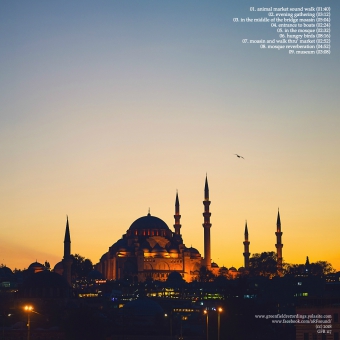
animal market sound walk (01:40)
evening gathering (03:12)
in the middle of the bridge moasin (05:04)
entrance to boats (02:24)
in the mosque (02:32)
hungry birds (08:16)
moasin and walk thru’ market (02:52)
mosque reverberation (04:52)
museum (03:08)
These recordings were made in 2006 in Istanbul. City I chose for my site specific project. I fell in love with that place, its dynamics, unpredictability and the people. Getting to know the city soundscapes I have recorded its life using simple pocket dat tape recorder and diy made binaural microphones.
I have managed to capture sounds that will always bring back the sound of this unique city, I always like to come back to these recordings and I grew to the stage to share them with you.
Recordings are not titled in order to leave listener with no prejudice or expectation leaving space just for listening experience.
Rafal Flejter
Credits:
Style: Field Recordings/Soundscape
Original photos: "Designed by Prostooleh / Freepik"
Artwork: GFR
(cc) 2018
Toni Dimitrov - Athens Sketches (GFR, 116)
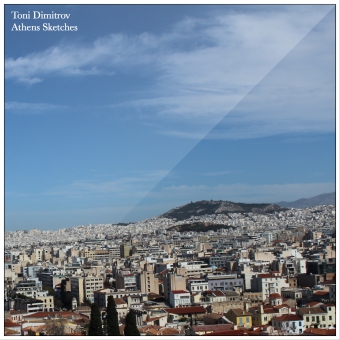
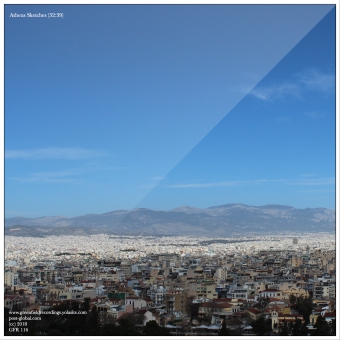
Credits:
Style: Field Recordings/Soundscape
Original photos: Toni Dimitrov
Artwork: GFR
(cc) 2018
Fernando Ribeiro - Botswana (GFR, 115)
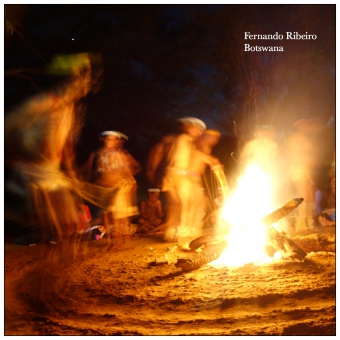
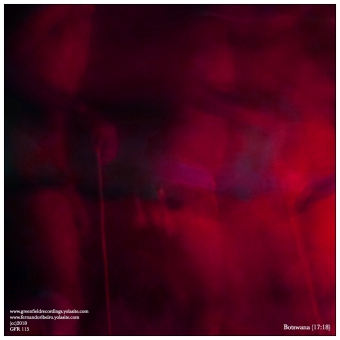
01. Botswana (17:18)
This recording collects excerpts of a performance by the San people with minor sound manipulation by Fernando Ribeiro.
The time is April 2017 and the space is the Kalahari Desert in Botswana. The context is that of Tourism with capital T: although this is the depths of Africa, tourists arrive on busses on a weekly basis, and under a very hot sun the San people are introduced to us as a very ancient people, the kind of last pure and nomadic ones around. They show us some tricks about their survival on the desert: how to fetch water, how to start a fire, how to find weeds for different usage and how to hunt animals. In a word: they act as their ancestors always have, or they may even actually reproduce real acts of their contemporary lives, but all the purity seems to vanish with the regularity of the touristic show. This is why when the night falls and you are invited for yet another act, this time with music, you become impressed to hear such pure circular chants that float on circular paths around the fire. This is not just a cover of old songs, you can actually feel the trance of your contemporaries being visited by their ancestors.
Fernando Ribeiro
Credits:
Style: Field Recordings/Soundscape
Original photos: Fernando Ribeiro
Artwork: GFR
(cc) 2018
Chris Lynn - Pond Views (GFR, 114)
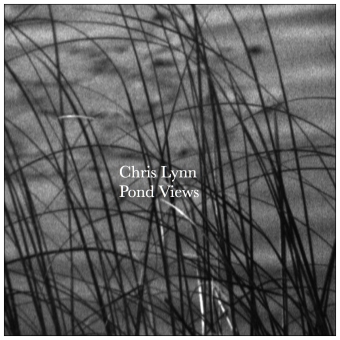
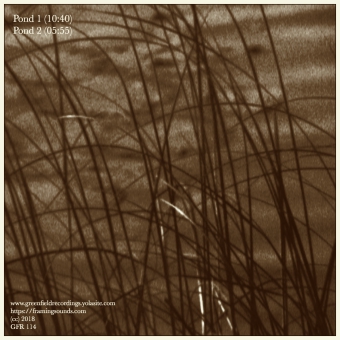
Pond 1 (10:41)
Pond 2 (05:55)
Pond views are two field recordings of ponds In China and America.
Pond 1 was recorded Nanjing, China during the early morning hours in July.
Pond 2 was recorded in Maryland, USA during the late afternoon hours in March.
Chris Lynn
Credits:
Style: Field Recordings/Soundscape
Original photo: Chris Lynn
Artwork: GFR
(cc) 2018